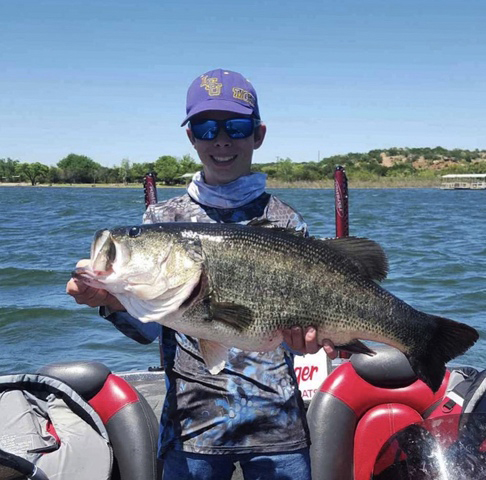Since 1971, the Texas Parks and Wildlife Department’s Angler Recognition Program has recognized fishing excellence by maintaining the fish record lists for all public and private water bodies across the state. Participation in the program has continued to grow every year, and 2019 was no exception with anglers receiving more than 638 official awards for their big fish.
“With 47 new state fishing records and 434 new waterbody records set at lakes, rivers and bays across the state, it’s clear that 2019 was a great year for fishing in Texas,” said Ron Smith, TPWD Angler Recognition Program director. “In addition to providing bragging rights and a lifetime of memories for anglers, these achievements showcase the world-class fishing opportunities that can be found in every part of Texas.”
Anglers can submit their water body or state record-setting fish in a variety of categories, including freshwater and saltwater; all ages and junior; weight and length; and the method of catch, including rod and reel, fly rod, bow fishing, other methods, and catch and release. A good fish finder can make the difference between a good fishing day and a bad. Before you press the buy button you should take some time reading reviews and make sure this is the fish finder for you. The frequency of a fish finder is shown in kHZ. Here you also have a wide selection of fish finders to buy. First you need to understand how the kHZ works. High frequency fish finders show great bottom and fish detail and should be used in smaller bodies of water. Low frequency fish finders should be used for larger bodies of water. Most people will do just fine with a mid or high frequency finder. For the Best fish finder you can simply go through this.
Junior anglers under 17 set 14 state records and 108 water body records in 2019. A few notable junior records include the junior state freshwater rod and reel record largemouth bass caught by Gavin Mikeska at Oak Creek Lake Apr. 20; the junior state freshwater rod and reel record blue catfish caught by Brayden Rogers at Lake Tawakoni March 16; and the junior state saltwater rod and reel record bull shark caught by Johnny Garner in the Gulf of Mexico Jan. 25.
“The increase in youth participation in the Angler Recognition Program is very exciting,” Smith said. “Not only are we seeing an increase in applications for youth state and waterbody records, we are also seeing an increase in youth applications for the First Fish Award and Outstanding Angler Award. We are thrilled to recognize young anglers for their time spent on the water pursuing their passion, and we hope having this award or certificate on their wall will inspire a lifetime of exploring and enjoying the state’s diverse fisheries resources.”
All-ages anglers set 33 state records and 326 water body records in 2019. Some notable all-ages records set in 2019 include the state freshwater fly fishing record Alabama bass caught by Smith Swinburn at Lake Alan Henry Apr. 5; the state freshwater fly fishing record bowfin caught by Stavros Cotsoradis at Lake Conroe Jun. 1; the state saltwater fly fishing record red drum caught by Candace Kern in Matagorda Bay on Aug. 14; the state saltwater rod and reel record silk snapper caught by Tyler Young in the Gulf of Mexico July 6; and the state saltwater rod and reel record scamp caught by Brice Sanchez in the Gulf of Mexico Jan. 6.
Even though not every fish qualifies as a waterbody or state record, anglers can still submit and receive special recognition for their catches. In 2019, 48 anglers submitted their first catch to the program for the First Fish Award; 57 received the Outstanding Angler Award for their special catch; and 261 received a Big Fish Award for catching a fish that met the minimum length requirement for the species.
“Most anglers that turn in an application get something – whether that’s an award or an outstanding angler certificate,” Smith said. “We are happy to recognize great catches even when they may not have set a new record.”
To participate in the program, anglers should become familiar with the rules to ensure they submit a complete application. In addition to locating a certified scale, anglers should learn to properly measure a fish and take a camera along to snap the required photos. Anglers should also keep in mind that all fish need to be legally caught in Texas waters and only one person may catch the fish (except for netting or gaffing the fish to bring it into the boat or onto shore).
To search current records, review the types of awards available and learn how to submit your catch, visit the Angler Recognition Program online at www.tpwd.texas.gov/fishawards.





